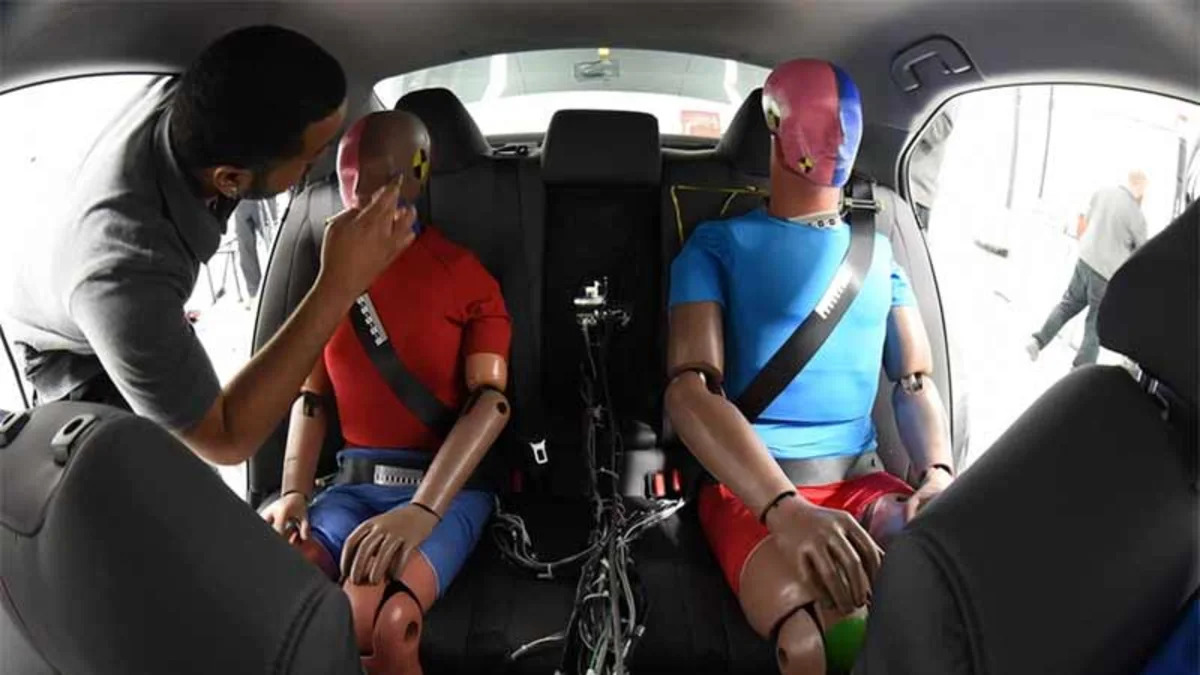A new study by the Insurance Institute for Highway Safety (IIHS) looked into 117 crashes that occurred in 2014, examining injuries and fatalities suffered by passengers in the back seats. The researchers found that even when adults, and children who'd outgrown car seats, had their seatbelts on, those passengers were injured and killed in numbers exceeding the rates for front-seat passengers. The organization concludes, "Rear-seat occupant protection hasn't kept pace with the front," and "more sophisticated restraint systems [are] needed in back."
Safety features like belt pre-tensioners and force limiters generally haven't made it past the B-pillar, making chest injuries due to seat belts the most serious affliction for people in the second row. Documents showed such wounds in 22 of the injured passengers among the 117 crashes, and in 17 of the 37 fatalities. In the cases of those who died, the IIHS said most of the crashes were considered survivable. Head injuries were the second-most common injury, suffered by nine injured occupants and 18 fatalities. In those cases, however, most of the fatalities happened in crashes not considered survivable.
Kids under 6 in approved car seats seem to have it best. The IIHS found that any children who died in properly installed child seats were in crashes considered unsurvivable.
More widespread use of tech like the seatbelt airbag Ford introduced in 2011 and that Mercedes-Benz adopted would help. The IIHS — funded by insurance companies — suggests more airbags for rear passengers, such as those that emerge from the roof or seatbacks, would also benefit. The IIHS isn't recommending a specific solution, but using the findings "to develop new front crash test that will evaluate occupant protection in rear as well as front." The hope is that the coming tests will "prompt automakers to figure out what combination of technologies works best."
Safety features like belt pre-tensioners and force limiters generally haven't made it past the B-pillar, making chest injuries due to seat belts the most serious affliction for people in the second row. Documents showed such wounds in 22 of the injured passengers among the 117 crashes, and in 17 of the 37 fatalities. In the cases of those who died, the IIHS said most of the crashes were considered survivable. Head injuries were the second-most common injury, suffered by nine injured occupants and 18 fatalities. In those cases, however, most of the fatalities happened in crashes not considered survivable.
Kids under 6 in approved car seats seem to have it best. The IIHS found that any children who died in properly installed child seats were in crashes considered unsurvivable.
More widespread use of tech like the seatbelt airbag Ford introduced in 2011 and that Mercedes-Benz adopted would help. The IIHS — funded by insurance companies — suggests more airbags for rear passengers, such as those that emerge from the roof or seatbacks, would also benefit. The IIHS isn't recommending a specific solution, but using the findings "to develop new front crash test that will evaluate occupant protection in rear as well as front." The hope is that the coming tests will "prompt automakers to figure out what combination of technologies works best."


Sign in to post
Please sign in to leave a comment.
Continue